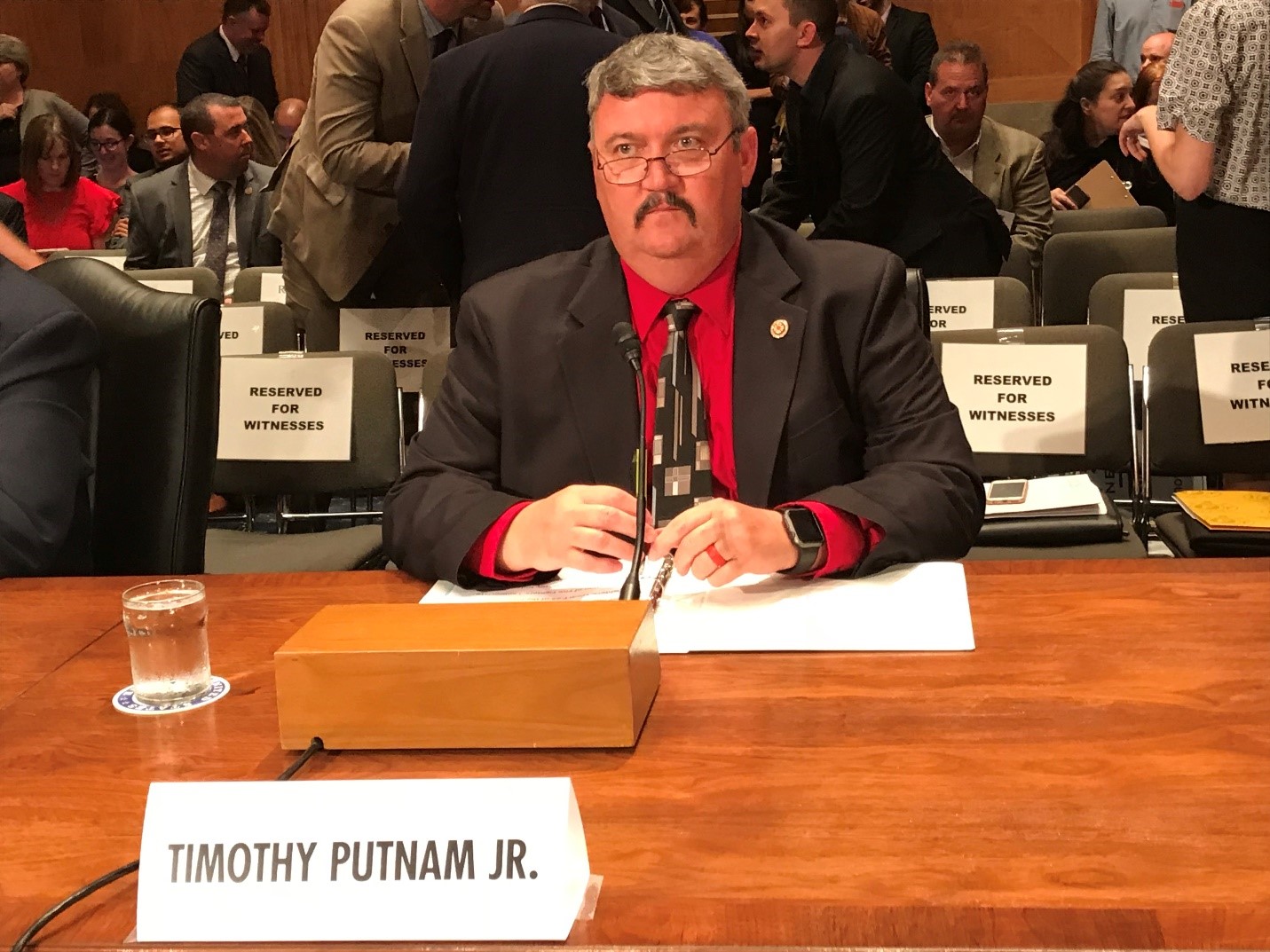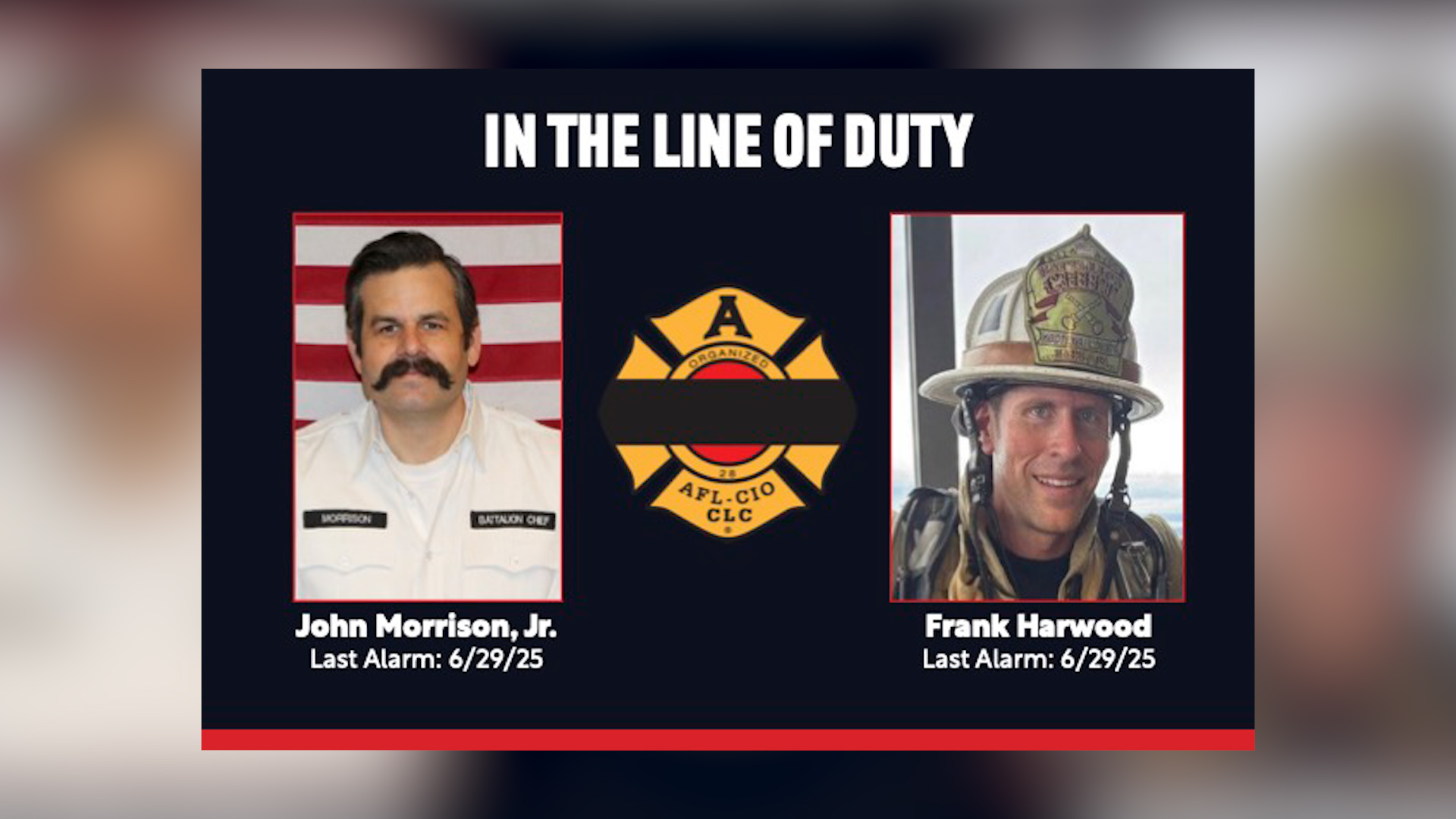Tidewater Federal Fire Fighters Local F-25 Vice President Timothy Putnam Jr. testified September 26 before the Senate Homeland Security and Governmental Affairs’ Subcommittee on Federal Spending Oversight and Emergency Management on the federal role in the toxic Per- and Polyfluoroalkyl Substances (PFAS) chemical crisis.
Chaired by Senator Rand Paul (R-KY) and Ranking Member Senator Gary Peters (D-MI), the hearing focused on PFAS, a toxic family of chemicals linked to various cancers, is found in aqueous film forming foam (AFFF) used by fire fighters to extinguish Class B flammable liquid fires and as a water repellent in some legacy turnout gear.
Having served 28 years with the Department of Defense (DoD), both as an enlisted Marine and as a civilian fire fighter with the Navy Mid-Atlantic Region Fire and Emergency Services, Putnam testified about his decades-long use of and exposure to toxic AFFF.
The Mil-Spec foam formulations containing PFAS are currently deployed at all commercial and military airports, along with many chemical and petroleum manufacturing plants.
Putnam explained to the Subcommittee that fire fighters at such locations frequently interact with AFFF while conducting apparatus readiness checks, vehicle replenishment operations and training evolutions involving live-fire jet fuel burns. In Putnam’s case, many of those non-firefighting encounters occurred without the benefit of any form of personal protective equipment (PPE). He further testified, “During the early part of my career, AFFF was thought to be so safe that I recall using it as a substitute for vehicle soap to wash fire department vehicles and fire station floors. Today we know that the opposite is true; AFFF is toxic and a hazard to fire fighters’ health.”
Scientific studies have demonstrated a host of medical conditions associated with PFAS exposures, including developmental effects during pregnancy or breastfeeding, thyroid damage, increases in blood cholesterol levels and a number of cancers, such as thyroid, kidney, bladder and testicular cancers. Additionally, the corrosive effects of PFAS can cause damage to the skin and eyes, including blindness.
Despite these facts, the number of studies on fire fighters exposed to PFAS have been limited and the IAFF is seeking to change this. What is now known is that a single exposure to toxic AFFF by fire fighters generally results in PFAS entering the body through inhalation or absorption. Furthermore, the toxin remains in the body for years. Additional exposures increase the potential for developing a health issue because the toxin bio accumulates within a fire fighter’s body.
The IAFF believes additional studies will help us learn with greater specificity the health impacts PFAS poses to fire fighters.
In addition to recommending additional studies, Putnam testified about the need for all fire fighters exposed to toxic Mil-Spec AFFF to regularly participate in annual medical monitoring programs, including blood testing, to determine the level of PFAS within the body.
Putnam further expressed concern that older AFFF and turnout gear containing toxic PFAS remain in use or are stockpiled at fire stations throughout the country, and that use of these legacy items must immediately discontinue.
The hearing coincided with a legislative victory on the PFAS front. The IAFF had been working closely with Senator Peters (D-MI) and Representative Dan Kildee (D-MI) to pass legislation allowing municipal airports the option to transition from toxic AFFF to alternative, fluorine-free options.
After a summer of intense lobbying by the IAFF while facing fierce opposition from industry, the Peters/Kildee language was successfully added to the FAA Reauthorization bill, which passed the House this week and is expected to pass the Senate in the very near future, with the president’s signature to follow.
Airport fire departments will soon be free to select fluorine-free foams that don’t contain toxic PFAS chemicals.



